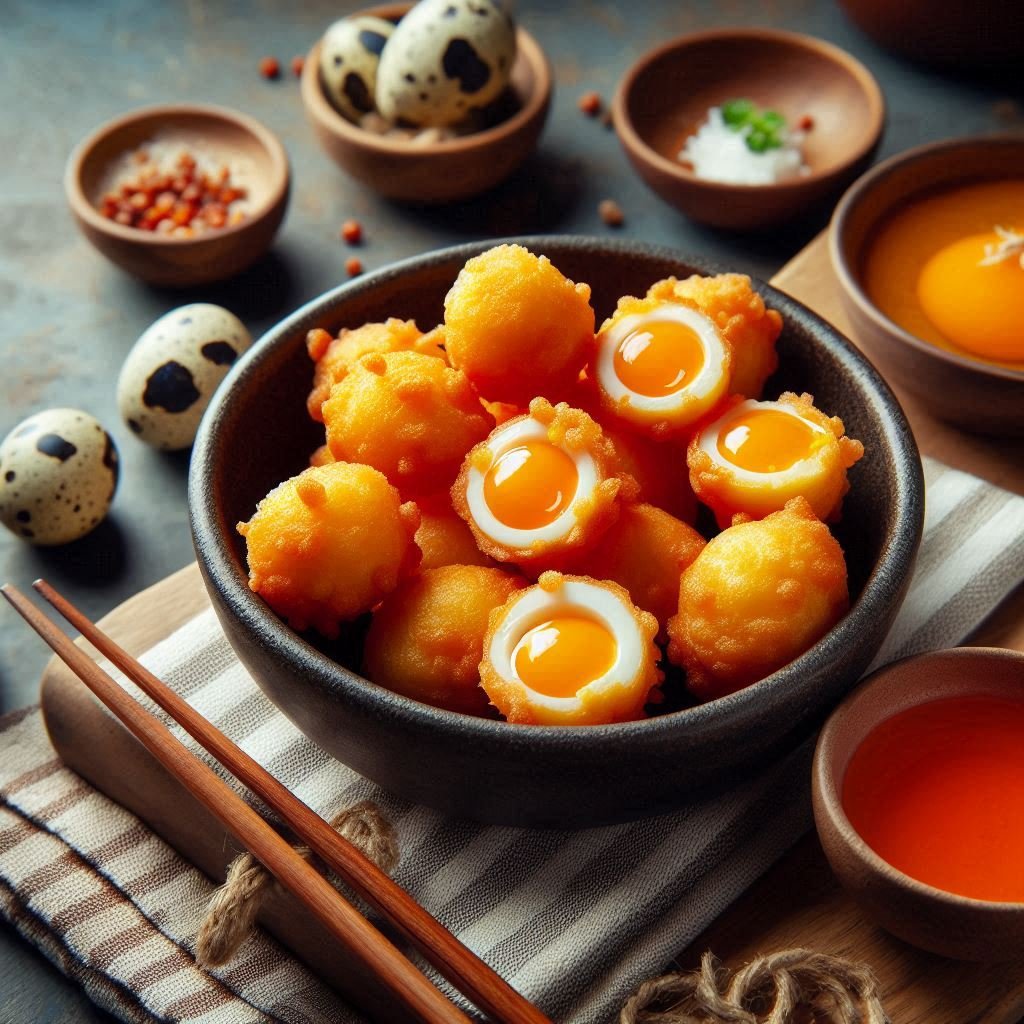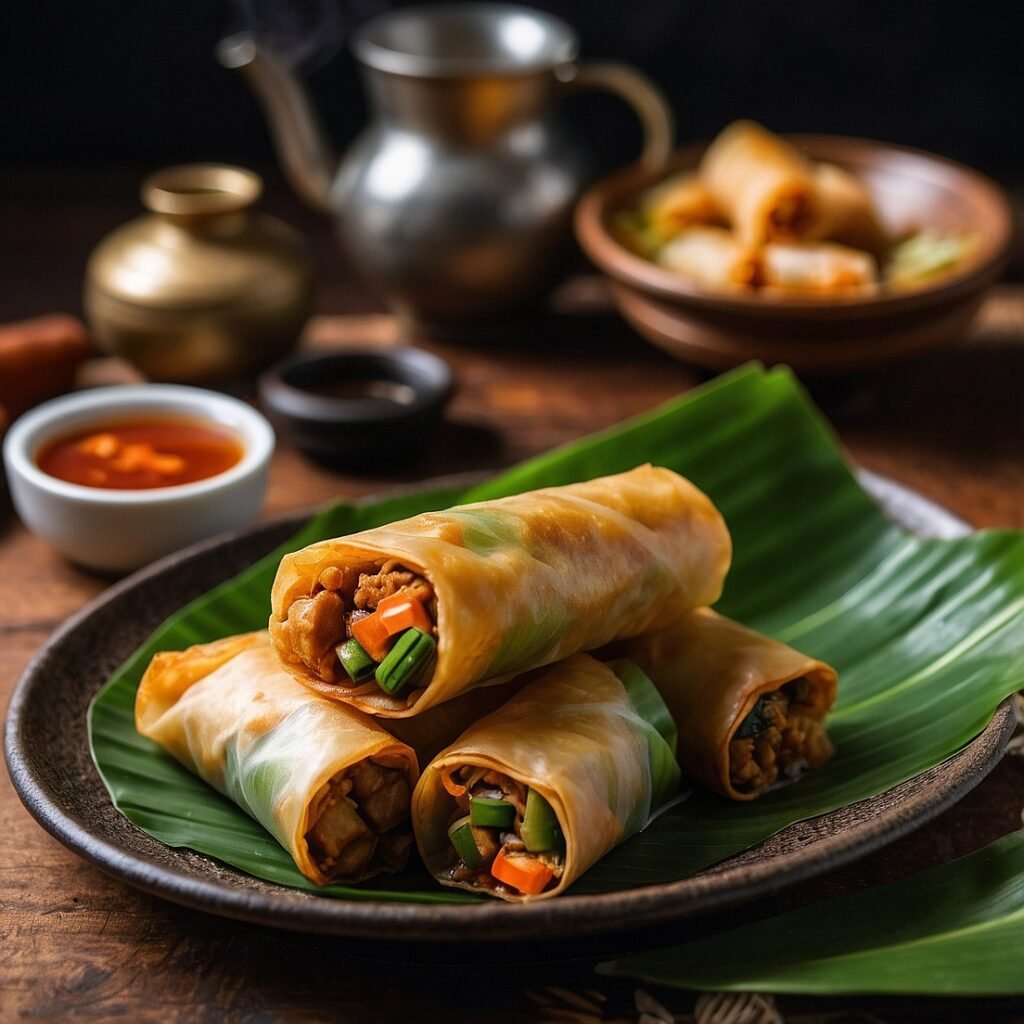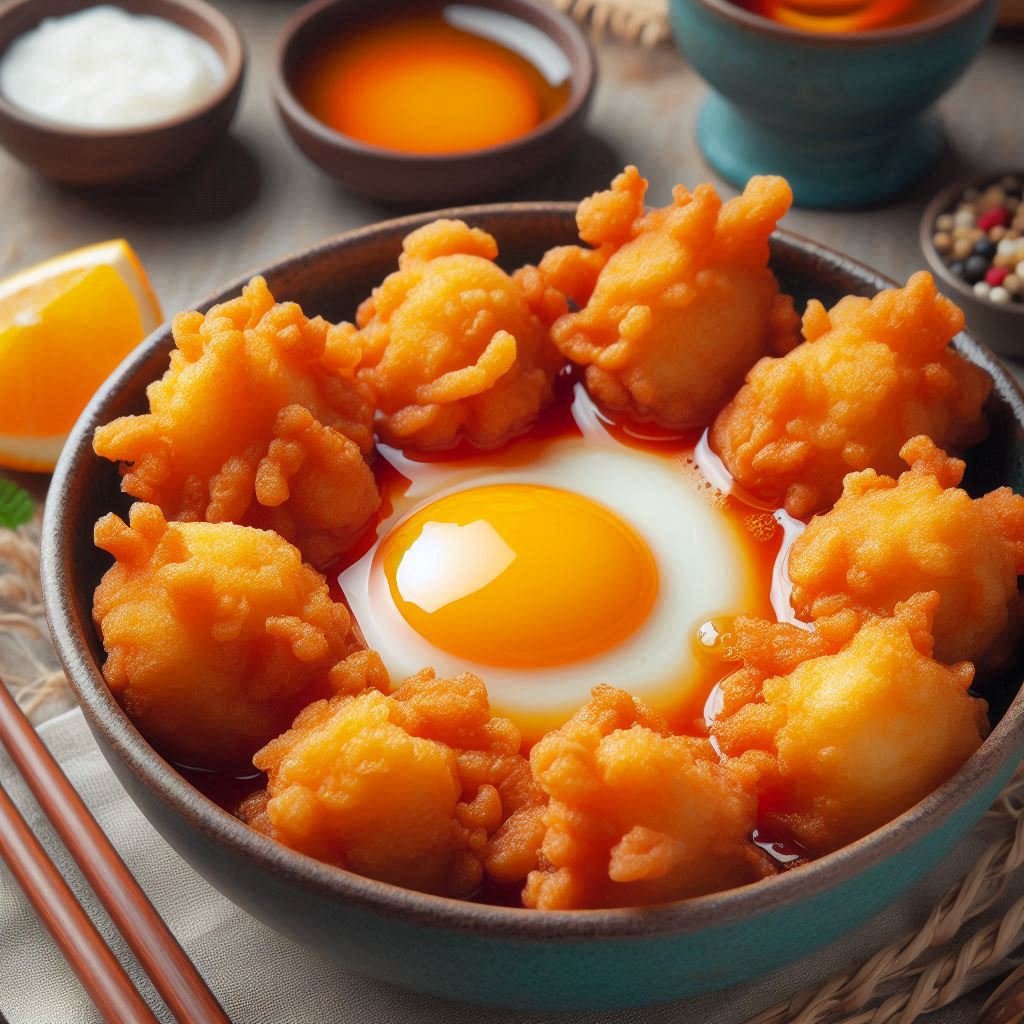Kwek-Kwek, a popular Filipino street food, has captured the hearts and taste buds of locals and tourists alike. This unique culinary creation consists of quail eggs encased in a vibrant orange batter and deep-fried to perfection. The dish’s origins, preparation methods, nutritional value, and cultural significance make it a fascinating subject for food enthusiasts and culinary anthropologists. In this comprehensive exploration, we will delve into the world of Kwek-Kwek, uncovering its history, ingredients, cooking techniques, and place in Filipino cuisine.
The Origins and History of Kwek-Kwek
The Birth of a Street Food Icon
The exact origins of Kwek-Kwek are somewhat shrouded in mystery, as is often the case with popular street foods. However, most accounts trace its inception to the bustling streets of Manila, the capital city of the Philippines, in the late 1970s or early 1980s. The dish is believed to have been created by resourceful street vendors looking for an innovative way to use quail eggs, which were becoming increasingly popular at the time.
Evolution and Spread
From its humble beginnings in Manila, Kwek-Kwek quickly gained popularity and spread throughout the Philippines. Its affordable price point, unique appearance, and satisfying taste made it an instant hit among students, office workers, and anyone looking for a quick, flavorful snack. Over the years, the dish has evolved, with variations in batter recipes and accompanying sauces emerging in different regions of the country.
Cultural Significance
Kwek-Kwek has become more than just a snack; it represents the ingenuity and resourcefulness of Filipino street food culture. The dish embodies the Filipino spirit of making the most out of available ingredients and creating something truly unique and delicious. Today, Kwek-Kwek is not only a beloved street food but also a symbol of Filipino culinary creativity.
Ingredients and Preparation
Key Components of Kwek-Kwek
The main ingredients for Kwek-Kwek are simple yet carefully chosen:
- Quail Eggs: The star of the dish, quail eggs are prized for their rich flavor and creamy texture.
- Orange Batter: A mixture typically consisting of flour, cornstarch, water, salt, and annatto powder or food coloring for the signature orange hue.
- Cooking Oil: Used for deep-frying the battered eggs to achieve a crispy exterior.
The Art of Preparation
The preparation of Kwek-Kwek involves several steps, each crucial to achieving the perfect texture and flavor:
- Boiling the Quail Eggs: The eggs are carefully boiled and peeled, ensuring they remain intact.
- Preparing the Batter: The dry ingredients are mixed with water to create a smooth, vibrant orange batter.
- Coating the Eggs: Each boiled quail egg is dipped in the batter, ensuring even coverage.
- Deep-Frying: The battered eggs are gently lowered into hot oil and fried until golden and crispy.
Nutritional Information
To provide a clear understanding of the nutritional content of Kwek-Kwek, here’s a table presenting the approximate nutritional values per serving (3 pieces):
| Nutrient | Amount per Serving |
|---|---|
| Calories | 150-180 kcal |
| Protein | 8-10 g |
| Fat | 10-12 g |
| Carbohydrates | 8-10 g |
| Cholesterol | 180-200 mg |
| Sodium | 150-200 mg |
It’s important to note that these values can vary based on the specific recipe and preparation method used.
The Culinary Experience of Kwek-Kwek
Texture and Flavor Profile
Kwek-Kwek offers a unique sensory experience that combines contrasting textures and flavors:
- Exterior: The crispy, slightly chewy orange batter provides a satisfying crunch.
- Interior: The soft, creamy texture of the quail egg creates a delightful contrast to the crispy exterior.
- Flavor: The mild, rich taste of the quail egg is complemented by the savory notes of the batter.
Serving Suggestions and Pairings
Kwek-Kwek is typically served hot, often accompanied by a variety of dipping sauces that enhance its flavor profile:
- Sweet and Sour Sauce: A tangy complement to the richness of the egg.
- Spicy Vinegar: Adds a kick of heat and acidity.
- Garlic Mayo: Provides a creamy, garlicky counterpoint.
The dish is often enjoyed alongside other popular Filipino street foods such as fishballs, squid balls, or isaw (grilled chicken intestines), creating a diverse and satisfying street food experience.
Kwek-Kwek in Filipino Cuisine and Culture
Role in Street Food Culture
Kwek-Kwek holds a special place in Filipino street food culture for several reasons:
- Accessibility: Its affordable price makes it accessible to people from all walks of life.
- Convenience: Easy to eat on the go, it fits perfectly into the fast-paced urban lifestyle.
- Social Aspect: Street food stalls selling Kwek-Kwek often become gathering spots for friends and colleagues.
- Culinary Identity: The dish represents the creativity and adaptability of Filipino cuisine.
Regional Variations
While the basic concept of Kwek-Kwek remains consistent throughout the Philippines, regional variations have emerged:
- Batter Ingredients: Some regions incorporate local spices or herbs into the batter for unique flavors.
- Egg Choices: In some areas, chicken or duck eggs are used instead of quail eggs, creating larger versions of the dish.
- Accompaniments: Local preferences for dipping sauces and side dishes vary across different regions.
Kwek-Kwek in Modern Filipino Cuisine
In recent years, Kwek-Kwek has transcended its street food origins and found its way into more upscale culinary settings:
- Gourmet Versions: High-end restaurants have created elevated versions of Kwek-Kwek, using premium ingredients and innovative presentation techniques.
- Fusion Dishes: Creative chefs have incorporated Kwek-Kwek elements into fusion cuisine, blending Filipino flavors with international culinary traditions.
- Home Cooking: The popularity of Kwek-Kwek has led to an increase in home cooks preparing the dish, with numerous recipes and tutorials available online.
The Economics of Kwek-Kwek
Street Vendor Perspective
Kwek-Kwek plays a significant role in the livelihoods of many street food vendors in the Philippines. Here’s a breakdown of the economics from a vendor’s perspective:
Cost Analysis (Approximate values in Philippine Pesos – PHP)
| Item | Cost per 100 Servings |
|---|---|
| Quail Eggs | PHP 300-400 |
| Batter Ingredients | PHP 100-150 |
| Cooking Oil | PHP 50-75 |
| Fuel/Electricity | PHP 50-75 |
| Packaging | PHP 50-75 |
| Total Cost | PHP 550-775 |
Revenue and Profit
- Average Selling Price: PHP 15-20 per serving (3 pieces)
- Revenue for 100 Servings: PHP 1500-2000
- Estimated Profit: PHP 725-1450 per 100 servings
This analysis demonstrates why Kwek-Kwek is an attractive option for street vendors, offering a good profit margin while remaining affordable for consumers.
Health Considerations and Nutritional Impact
Potential Health Benefits
Despite being a deep-fried snack, Kwek-Kwek does offer some nutritional benefits:
- Protein Source: Quail eggs are rich in high-quality protein, essential for muscle building and repair.
- Vitamin and Mineral Content: Quail eggs contain vitamins B12, A, and E, as well as minerals like iron and selenium.
- Moderate Portion Size: The small size of quail eggs helps in portion control.
Health Concerns
However, there are some health considerations to keep in mind:
- High Cholesterol: Quail eggs are relatively high in cholesterol, which may be a concern for individuals with cardiovascular issues.
- Calorie Density: The deep-frying process adds significant calories and fat to the dish.
- Sodium Content: The batter and accompanying sauces can contribute to high sodium intake.
Moderation and Balance
Nutritionists and health experts generally advise enjoying Kwek-Kwek in moderation as part of a balanced diet. For those concerned about the health implications, consider the following tips:
- Limit Portion Sizes: Enjoy Kwek-Kwek as an occasional treat rather than a daily staple.
- Choose Healthier Accompaniments: Opt for vegetable-based sides or salads to balance the meal.
- Explore Baked Versions: Some vendors and home cooks have developed baked versions of Kwek-Kwek, reducing the oil content.
The Global Appeal of Kwek-Kwek
International Recognition
While Kwek-Kwek remains primarily associated with Filipino cuisine, it has begun to gain recognition on the international stage:
- Food Tourism: Visitors to the Philippines often seek out Kwek-Kwek as part of their culinary exploration.
- Filipino Diaspora: Filipino communities worldwide have introduced Kwek-Kwek to their adopted countries.
- Food Festivals: International food events increasingly feature Kwek-Kwek as a representative of Filipino street food culture.
Adaptations and Inspirations
The unique concept of Kwek-Kwek has inspired chefs and food enthusiasts around the world:
- Fusion Creations: Some international chefs have created dishes inspired by Kwek-Kwek, incorporating local ingredients and culinary traditions.
- Street Food Evolution: The success of Kwek-Kwek has encouraged street food vendors in other countries to experiment with battered and fried egg dishes.
- Culinary Education: Kwek-Kwek is increasingly featured in culinary schools and workshops focusing on global street food traditions.
Sustainability and Future Trends
Environmental Considerations
As awareness of environmental issues grows, the street food industry, including Kwek-Kwek vendors, is facing new challenges and opportunities:
- Packaging: Many vendors are exploring eco-friendly packaging options to reduce plastic waste.
- Oil Usage: Some are investigating more efficient frying methods or oil recycling programs.
- Sourcing: There’s a growing interest in using locally sourced, free-range quail eggs.
Future Trends
Looking ahead, several trends may shape the future of Kwek-Kwek:
- Health-Conscious Variations: Development of lower-fat or baked versions to appeal to health-conscious consumers.
- Gourmet Experiences: Continued exploration of high-end, artisanal versions of Kwek-Kwek in upscale dining settings.
- Global Expansion: Potential for Kwek-Kwek to gain popularity in other countries, possibly leading to localized variations.
- Technology Integration: Use of social media and food delivery apps to reach a wider customer base.
Conclusion
Kwek-Kwek stands as a testament to the creativity, resourcefulness, and vibrant food culture of the Philippines. From its humble origins on the streets of Manila to its current status as a beloved national snack, Kwek-Kwek has carved out a unique place in Filipino cuisine. Its simple yet ingenious combination of quail eggs and crispy orange batter continues to captivate food lovers, offering a delightful sensory experience that bridges tradition and innovation.
As Kwek-Kwek evolves and adapts to changing culinary landscapes and consumer preferences, it remains a proud symbol of Filipino street food excellence. Whether enjoyed from a bustling street corner in Manila or as part of a gourmet tasting menu in a high-end restaurant, Kwek-Kwek continues to bring joy and satisfaction to those who savor it. Its journey from local street snack to internationally recognized delicacy is a compelling narrative of how simple, authentic foods can transcend boundaries and capture the imagination of food enthusiasts worldwide.
In the ever-changing world of global cuisine, Kwek-Kwek stands as a delicious reminder of the power of street food to connect people, cultures, and culinary traditions. As we look to the future, it’s clear that this humble yet extraordinary dish will continue to play a significant role in the rich tapestry of Filipino food culture, inspiring chefs, delighting consumers, and showcasing the best of what Philippine cuisine has to offer to the world.
Disclaimer: This article is intended for informational purposes only. While every effort has been made to ensure the accuracy of the information presented, readers are advised to consult with qualified nutritionists or healthcare professionals for specific dietary advice. Nutritional values and economic data may vary depending on specific ingredients, preparation methods, and market conditions. If you notice any inaccuracies in this article, please report them so we can promptly make corrections.




